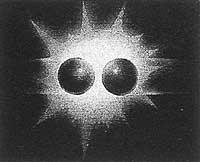Emilio Segre dies
1989/07/01 Elhuyar Zientzia Iturria: Elhuyar aldizkaria
Emilio Segre, an Italian nuclear physicist who won the Nobel Prize in 1959, died on April 22 in Lafayette, California. Segre was born on February 1, 1905 in the Tiboli village of Lazio.
Segre is best known for his work in nuclear physics, but he began working as an atomic physicist. In 1930-32 he worked on the forbidden lines of atomic spectra and the Zeeman effect.

In 1934 he began working on nuclear physics in the team led by Enrico Fermik at the University of Rome. He participated in the investigation of the first radioactive isotopes obtained by bombardment of uranium and thorium with neutrons; in the discovery of the elastic neutrons and of the wide section of the medium and high size nuclei with respect to them. For his part, Segre discovered the isotopes of a relatively long life of element 43. This new element was called technetium, which in Greek means “artificial”. The technique was achieved by bombarding molybdenum protons.
In 1938 he went to the armerías of Iparralde fleeing fascism. In 1943-46 he managed to develop the atomic bomb, participating in the Manhattan project. He studied the spontaneous fission of uranium and plutonium as head of the group.
At the end of the war he returned to the California University of Berkeley. She studied the dispersion of protons/protons and protons/neutrons using unpolarized proton beams.
He then began working on the Bebatroi particle accelerator in Berkeley, where protons and nuclei were placed. This work allowed him to locate the antiproton.
Nobel prize for the discovery of antiproton.

Gai honi buruzko eduki gehiago
Elhuyarrek garatutako teknologia




